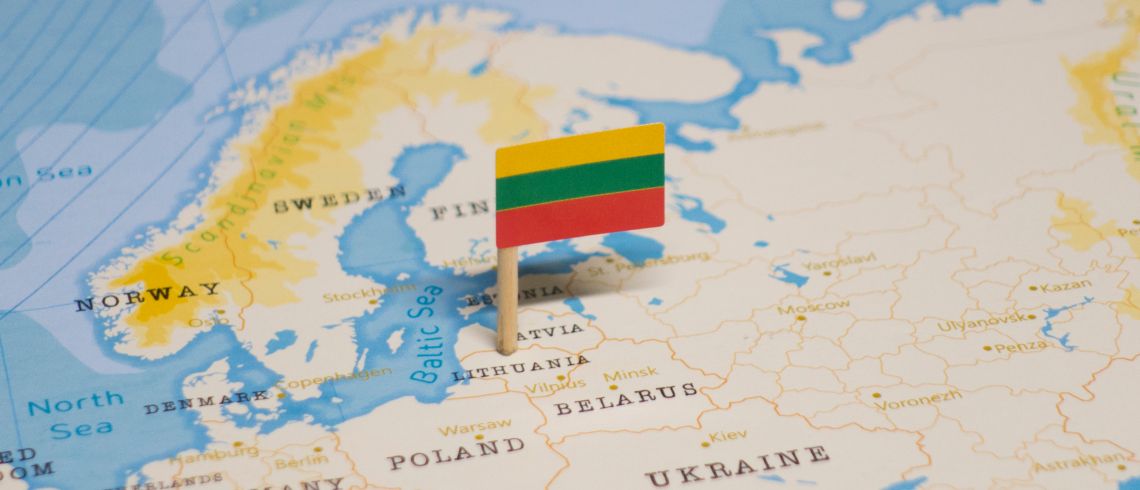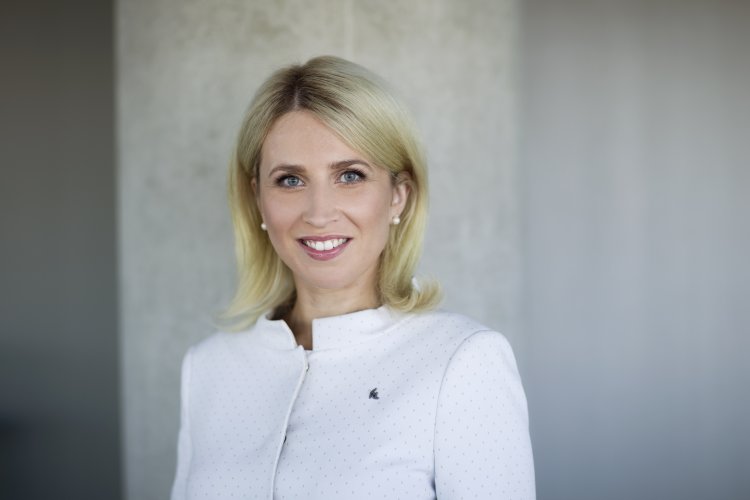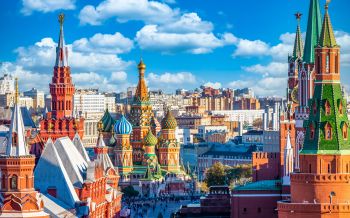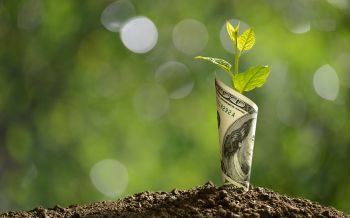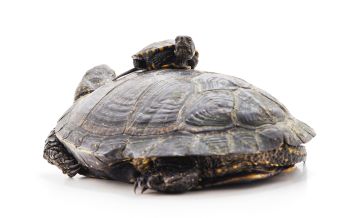Europe’s energy markets went into panic mode when Russia invaded Ukraine in the small hours of Thursday, 24 February 2022. Multiple sanctions packages from the West, aimed at limiting Russia’s ability to fund its illegal war efforts on the EU’s eastern frontier, have resulted in Moscow gradually turning energy into its most potent weapon.
As piped gas flows from Russia diminish, the EU, which depended on Russia for 49% of all the gas it imported in 2021, has responded mainly by beefing up its LNG regasification capacity in the form of floating storage and regasification units (FSRUs). Klaipeda, the FSRU-based LNG terminal on Lithuania’s Baltic Sea coast, operated by Klaipedos Nafta (KN), has quickly emerged as an example to follow for the flurry of projects announced in the spring of 2022 that aim to utilise an FSRU, says Jurgita Silinskaite-Vensloviene, head of LNG commerce at KN.
Strategic importance
Ever since it started operating in 2014, Klaipeda has been greatly valued by Lithuania and the Baltic region as a window to the global energy world. But 2022 was an especially significant year for the 2.9 mtpa (3.75 Bcm/year) facility, which is served by Hoegh LNG’s 170,000 cm Independence FSRU – the vessel’s name a clear indication of its raison d’etre. The terminal marked several milestones last year, some of which were planned, others a direct consequence of Russia’s war in Ukraine.
According to Silinskaite-Vensloviene, who is responsible for commercial, regulatory and logistical operations at Klaipeda, before KN chartered the Independence FSRU in 2014, Lithuania, Latvia, Estonia and Finland were energy islands in terms of their gas supply, as the only source of gas for them was through pipeline from Russia, with no connection to the gas grids of the rest of Europe. The Klaipeda LNG terminal offered alternative supply to Lithuania, but also the Baltic region, which meant there was an opportunity to start price negotiations with the Russians.
For Lithuania, having an LNG terminal was also an economic decision: in 2012-2013, due to the lack of alternative gas supplies, the country paid approximately 40% more for gas per year compared to countries such as Germany and France, making it the highest average price in Europe. But the situation was normalised once the FSRU began receiving LNG.
The persistently volatile global energy market of the past two years, which was aggravated by Russia’s ongoing war in Ukraine, means that KN’s promotion of Klaipeda as infrastructure of strategic importance for the Baltic region reached a new level in 2022, says Silinskaite-Vensloviene. In April, the Lithuanian government was among the first EU nations to announce an end of imports of Russian gas – with the exception of transit flows to the Russian exclave of Kaliningrad, which is sandwiched between Lithuania and Poland. The tension grew as Gazprom later halted supplies to its clients bound by long-term supply contracts, with Poland and Bulgaria coming first, after they refused to switch to the gas-for-rubles payment scheme that was enforced by a decree signed by Russian President Vladimir Putin in April.
Silinskaite-Vensloviene tells LNG Business Review that, since then, the use of Klaipeda LNG has increased “exponentially,” with the terminal working “on the edge of technological capabilities,” as it tries to supply as much regasified LNG to the market as possible, in order to ensure a safe winter now, while also starting preparations for a well-stocked winter of 2023-24.
She explains: “If in previous years our [average] utilisation was around 50% of our technological capacity, now, from the beginning of January to-date [early December] our average utilisation reached 71%. In comparison, from 1 May, the daily utilisation rate has been 85% and sometimes up to 100% of our nameplate capacity.”
In a pre-war situation we would have never thought that farther countries could be expressing interest in our services.
She adds that the utilisation rate of other terminals in Europe has remained at around 64%. In Klaipeda LNG’s case, its higher utilisation rate is due to the terminal’s location and vicinity to many gas grid interconnectors with Latvia, Estonia, Finland and, from this year, Poland. The interconnectors are “very well developed,” highlights Silinskaite-Vensloviene, and the regional market is, as a result, very active.
In comparison, much lower utilisation rate is observed in Spain, she points out. While there is plenty of LNG capacity in the Iberian country, and pipelines receive natural gas from Algeria, the interconnection with neighbouring France is not that developed, which means its northern neighbour is missing out on the benefits of Spanish LNG infrastructure.
More demand, more capacity
Due to the surge in demand for Klaipeda’s services – the terminal received 1.49 mt in the first nine months of 2022, up 51% from 0.99 mt in the same period in 2021 – in July KN announced that it had begun studies to assess its options for increase the terminal’s regasification capacity, from the current 2.9 mtpa (3.75 Bcm/year) to either 3.7 mtpa (5 Bcm/year) or 4.6 mtpa (6.25 Bcm/year). In December, KN said it had concluded the studies and announced a non-binding open season, the aim of which is to assess the market participants’ demand for expanded capacity. The deadline for applications is 1 February 2023.
Silinskaite-Vensloviene elaborates: “Depending on the results of the non-binding stage, we will decide whether it is needed to proceed with a binding stage and calculations on the necessary expansion, or whether there is no further interest.” Expansion works are planned to be completed by the second half of 2026.
When asked which countries were approaching KN for capacity bookings, Silinskaite-Vensloviene says: “The geographic exposure is very diverse. In a pre-war situation we would have never thought that farther countries could be expressing interest in our services. But probably the closest ones geographically are Poland, Ukraine, Moldova, Czech Republic, Slovakia and also countries from northern Europe.”
With Klaipeda LNG’s importance growing beyond just the Baltics, in October KN announced that ~60% of its capacity had been booked under 10-year deals – the first long-term agreements in the terminal’s eight-year history. Previously it was only possible to book capacities on an annual or spot basis. Silinskaite-Vensloviene says long-term capacity allocation has been in the making for two years, and that it coincided by accident with the uncertainty on the market caused by the war in Ukraine.
A total of 24 TWh (2.46 Bcm) was allocated to four companies: two Lithuania-registered entities that wish to remain anonymous, Polish NOC PGNiG and Latvia’s state-owned utility Latvenergo. For the next year, 9 TWh (0.92 Bcm) was allocated on an annual basis and 6 TWh (0.61 Bcm) reserved for spot cargoes – but with the obligation to ensure gas for isolated power production in case it is needed.
We expect hydrogen to be one of the most important energy sources in the future – probably taking over the role of natural gas.
“Lithuania is still in the electricity balancing zone circle, which is controlled from Moscow, and in order to ensure that Lithuania and neighbouring countries are prepared to self-sustain the isolated regime in the electricity sector, some additional capacities are needed. But if it is not needed for isolated electricity production, the spot capacities will be allocated to market participants,” Silinskaite-Vensloviene explains.
Future-proofing the terminal
KN says that social, corporate and environmental responsibility is of core importance to all of the firm’s activities. When it comes to the Klaipeda LNG terminal, KN is involved in several programmes. For example, it is taking part in CarbonNeutralLNG, a three-year initiative launched in Nuremberg, Germany, in November, to develop a hybrid process chain involving the production of hydrogen from biomass and its conversion to synthetic methane using a variety of chemical and biological processes.
The project, funded by Horizon Europe, brings together 12 partners, including universities in Germany, Austria, Greece, the Baltic Energy Innovation Centre in Sweden and several business organisations.
Silinskaite-Vensloviene says: “We see that the highest benefit of synthetic methane, in comparison to other carriers of hydrogen, like ammonia or methanol, is that you need to invest in production, but don’t need to invest into the logistics because the infrastructure and the end-user are already there.”
In addition, the firm is currently conducting studies on the implementation of a project aimed at reducing CO2 emissions by up to 30% from the LNG terminal, which currently only exists as a technological solution for onshore facilities, Silinskaite-Vensloviene reveals.
KN is also involved in discussions with different technology firms for CO2 capture onboard the FSRU. Silinskaite-Vensloviene explains: “So far, it is very complicated to implement, as it does not allow to capture 100% of CO2 emissions. On the other hand, KN is looking towards its own energy transition and shifting to new sources of energy: not only hydrogen, which we expect to be one of the most important energy sources in the future – probably taking over the role of natural gas – but also the combinations of hydrogen and different hydrogen carriers.”
Little demand for small-scale
Parallel to its large-scale FSRU-based terminal, KN also operates a small-scale LNG facility. With a capacity of 5,000 cm and 10 storage tanks, it is mostly used for truck loading services, which distribute volumes to off-grid locations for the domestic, power generation and industrial industries. Its largest client and most developed small-scale target market is Poland.
Silinskaite-Vensloviene says that, apart from Poland, there are not that many other consumption centres for small-scale LNG volumes in the Baltics. There are several reasons for this, she explains, including the fact that pipeline connections are pretty well-developed in the region, and these countries have already switched to using more sustainable fuels.
For us, the countries that are neighbouring Russia, we probably know best what to expect from Russia. For countries not sharing a border with Russia, it is more complicated.
“We don’t use coal that much for heating and power generation, which is still the case in Poland, and LNG is part of its government’s decarbonisation policy. Therefore, this market, especially with its off-grid locations where the pipeline system is not that intense, has much higher LNG consumption.”
When it comes to bunkering, Silinskaite-Vensloviene says that, though KN has the needed infrastructure for such operations, KN does not currently observe any demand for it in the Baltic Sea, suggesting that this might be due to the “very high” LNG prices, as opposed to oil-based marine fuels and other alternatives.
‘Interesting’ years ahead
“The name of our FSRU is Independence. The target was to ensure that we have an alternative to Russian energy and that we can sustain ourselves, independently, in case something happens. This was not just an emotional or even only an economic rationale, it was also related to the experiences that we faced as a country, illustrated by disruptions in oil, gas and power supply in different periods of our independent state history,” Silinskaite-Vensloviene stresses.
She adds: “For us, the countries that are neighbouring Russia, we probably know best what to expect from Russia. But for countries not sharing a border with Russia, it is more complicated. Sometimes it seems to them like Russia is too far away to ever affect them.”
For Silinskaite-Vensloviene, the fact that some European countries are still buying Russian LNG is controversial. Though she understands that securing natural gas of any origin is important to Europe’s energy security, there are alternatives to Russian gas, and a more strict approach on this at an international level is needed.
Reflecting on the future, Silinskaite-Vensloviene expects the next few years to be “interesting yet unpredictable.” Overall, the LNG liquefaction market is developing “quite rapidly,” with final investment decisions (FIDs) and big decisions being or set to be taken not only by established LNG players, like the US and Qatar, but also newcomers, such as Tanzania, she adds.
“We hope that in the long term the market will balance, but in the short term, the tension in the natural gas and LNG industries will be dependent on many things, such as the weather.”
While the situation in the global energy market remains “very unpredictable,” it is “hard to predict what to expect. But positive aspects are definitely in place in regards to supplies and imports, so hopefully we can expect market balance in the future,” she concludes. - JS
Subscription Benefits
Our three titles – LNG Business Review, Gas Matters and Gas Matters Today – tackle the biggest questions on global developments and major industry trends through a mixture of news, profiles and analysis.
LNG Business Review
LNG Business Review seeks to discover new truths about today’s LNG industry. It strives to widen market players’ scope of reference by actively engaging with events, offering new perspectives while challenging existing ones, and never shying away from being a platform for debate.
Gas Matters
Gas Matters digs deep into the stories of today, keeping the challenges of tomorrow in its sights. Weekly features and interviews, informed by unrivalled in-house expertise, offer a fresh perspective on events as well as thoughtful, intelligent analysis that dares to challenge the status quo.
Gas Matters Today
Gas Matters Today cuts through the bluster of online news and views to offer trustworthy, informed perspectives on major events shaping the gas and LNG industries. This daily news service provides unparalleled insight by drawing on the collective knowledge of in-house reporters, specialist contributors and extensive archive to go beyond the headlines, making it essential reading for gas industry professionals.

